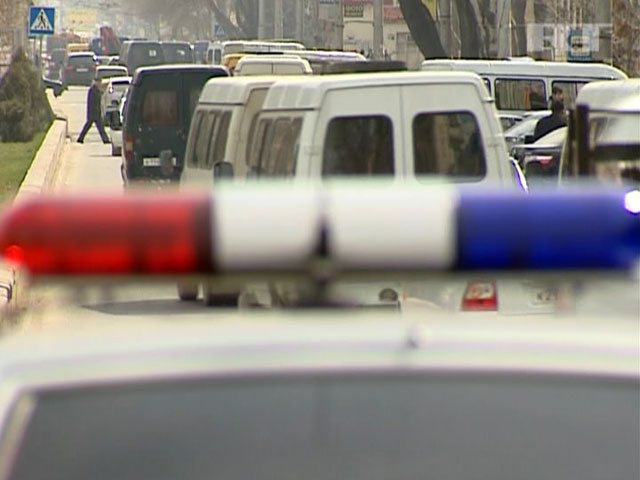
Intra-Muslim Conflict Becomes New Dimension to Instability Dagestan
Publication: Eurasia Daily Monitor Volume: 10 Issue: 211
By:

Six people were wounded by knives during large-scale clashes near a mosque in the town of Leninkent (formerly the village of Atly Buyun) near Makhachkala, Dagestan, on November 15. Two of those injured were hospitalized in critical condition (https://lifenews.ru/#!news/122767). The clash would not have been worth noting had it not involved adherents of two schools of Islamic teaching—Salafis and Sufis. According to preliminary information, the Sufis attempted to prevent the Salafis from entering the mosque, triggering the clash, which involved up to 300 people (https://newsru.com/religy/15nov2013/leninkent.html).
The fight started prior to the Friday prayers that are mandatory for all Muslims and are preferable carried out at a mosque, which symbolizes the unity of the Muslim umma (community). That unity, however, has been clearly absent from this village for a long time.
The town of Leninkent, better known in Makhachkala as the former Kumyk village of Atly Buyun, has several mosques but only one Juma (Friday) mosque for a population of 20,000 (https://mikail-77.livejournal.com/60468.html). Every person in the village goes to a mosque according to his or her views. The Salafis have tried to turn their local mosque into the main Friday mosque for a while. However, this contradicts Islamic norms, which demand that Friday prayers should take place in the central mosque. A branch of the main mosque, or a second main mosque, can only be created if the original main mosque cannot accommodate everyone who wants to pray. The main mosque in Leninkent is large enough to accommodate all Muslims and another large building has been built at the mosque for the purpose of holding Friday prayers (https://kurbanov05dag.livejournal.com/131121.html).
Even though the main mosque is only two streets away from the Salafis’ location in the town, they expanded their mosque, which is housed in a Soviet-era village club, thereby triggering the conflict. Moreover, Salafis from other areas of Dagestan started to come to the town for Friday prayers. According to a couple of estimates, up to 2,500 Salafis gather in this mosque, while only several dozen town residents are considered to be Salafis (https://www.kavkaz-uzel.ru/articles/231533/). Thus, the Salafi mosque positioned itself as a counterbalance to the historical central Sufi mosque, which is located in the center of town. The alternative Salafi mosque was associated with those Muslims who had disagreements with the Spiritual Board of Muslims of Dagestan. While the Salafi mosque was being built, the Salafis said it would be a madrasah, but it wound up being both a mosque and a hafiz school (a school for memorization of the Koran). So, Salafi websites that accuse the Sufis of attacks on innocuous Salafis are not truthful (https://kavkazcenter.com/russ/content/2013/11/15/101711.shtml). Both parties, the Salafis and the Sufis, suffered in the clashes, and the residents of the town split along the lines of the two Islamic schools of thought.
On November 15, young men from the central mosque blockaded the Salafi mosque, demanding that everyone in it should move to the central mosque, while outsiders were asked to leave town and never come back. The confrontation ended up in physical violence and reverberated throughout Dagestan. The tragedy could have been bloodier had the police not intervened, shooting in the air and signaling that they would disperse the crowd.
This is not the first such confrontation in Leninkent, though the previous conflicts did not end up in stabbings (https://mikail-77.livejournal.com/63937.html). For example, on October 11, to mitigate the aggressive actions of town residents, the police blockaded the Salafi mosque. On October 18, the police arrested several Muslims who came to the Salafi mosque for Friday prayers (https://www.kavkaz-uzel.ru/articles/233552/). So the conflict between the two teachings in Islam in this town has been ongoing and it is likely to flare up once again.
The conflict can hardly be characterized as inter-ethnic since both conflicting sides include different ethnic groups. The murids that blockaded the Salafi mosque were ethnic Kumyks, but the Salafis who confronted them were also mainly Kumyks. At the same time, the imams of the Salafi mosque and the Sufi mosque are both ethnic Avars.
Responsibility for the conflict partly lies with the Spiritual Board of Muslims of Dagestan, which had not communicated its position clearly (https://www.regnum.ru/news/1733254.html). Dagestan’s mufti, Ahmad-Haji Abdulaev, personally visited Leninkent in October and it was decided that no obstacles would be placed in the way of Friday prayers at the Salafi mosque. The fact that this decision was not properly communicated to the Sufi parishioners of the central mosque attests to the poor decision-making process by the Spiritual Board of Muslims (https://moidagestan.ru/news/society/34430). Having allowed the Salafis to have their own mosque, the Dagestani mufti did not explain the decision to the residents of the town in a proper manner, which resulted in renewed confrontation and blood-letting.
Moreover, the conflict also indicates a new trend occurring in Dagestan whereby the republican leadership appears to be abandoning the fragile dialogue that the Sufis and the Salafis established under the auspices of Dagestan’s previous president, Magomedsalam Magomedov (https://www.youtube.com/watch?v=tq2eKMiG4Eo). If this turns out to be the case, Dagestani society will face a deepening conflict between various Islamic factions that will involve not only the Sufis and the Salafis, but adherents of other teachings, such as the Muslim Brotherhood, Hizb ut-Tahrir al-Islami, the followers of Said Nursi and so on. Thus, the Muslim community of Dagestan is in a precarious state, and religious differences could become another source of destabilization in the republic in addition to the ongoing militant insurgency.




